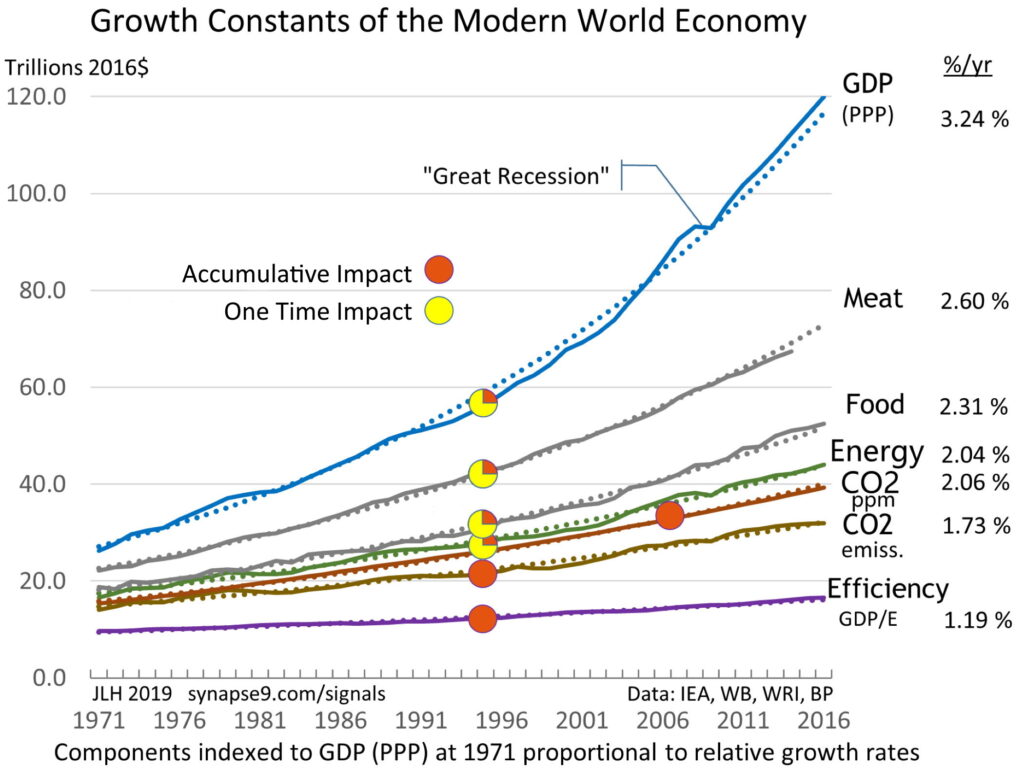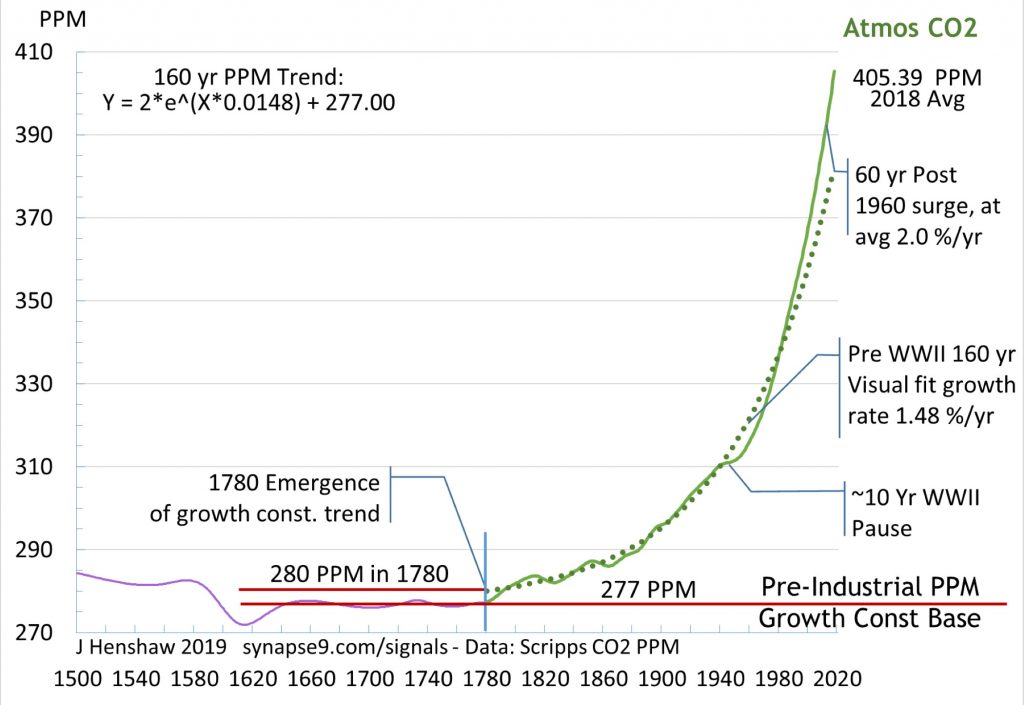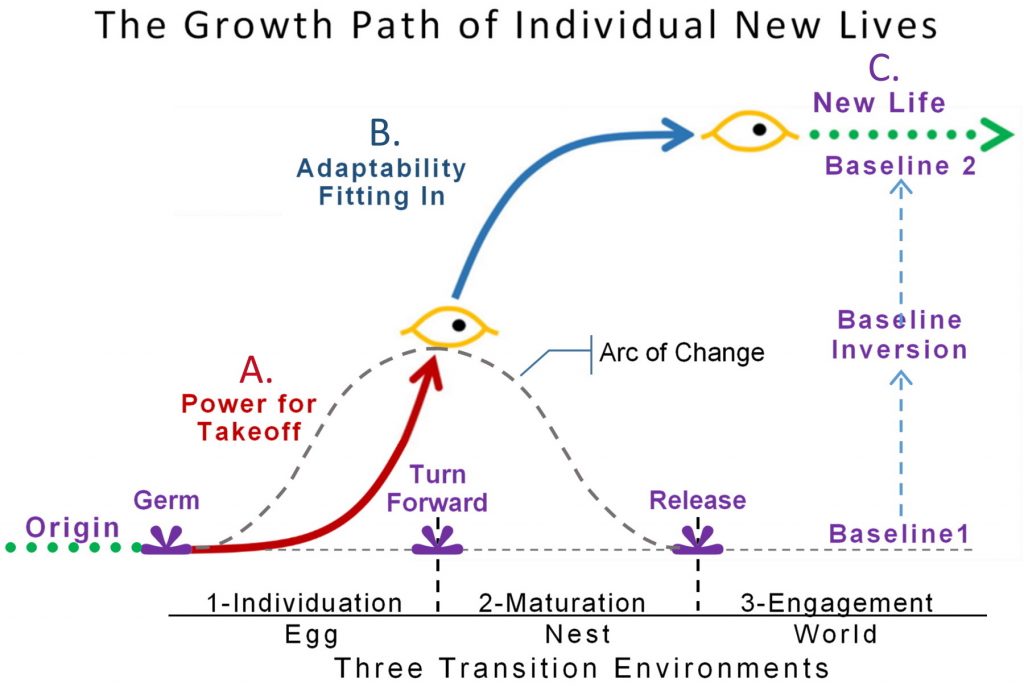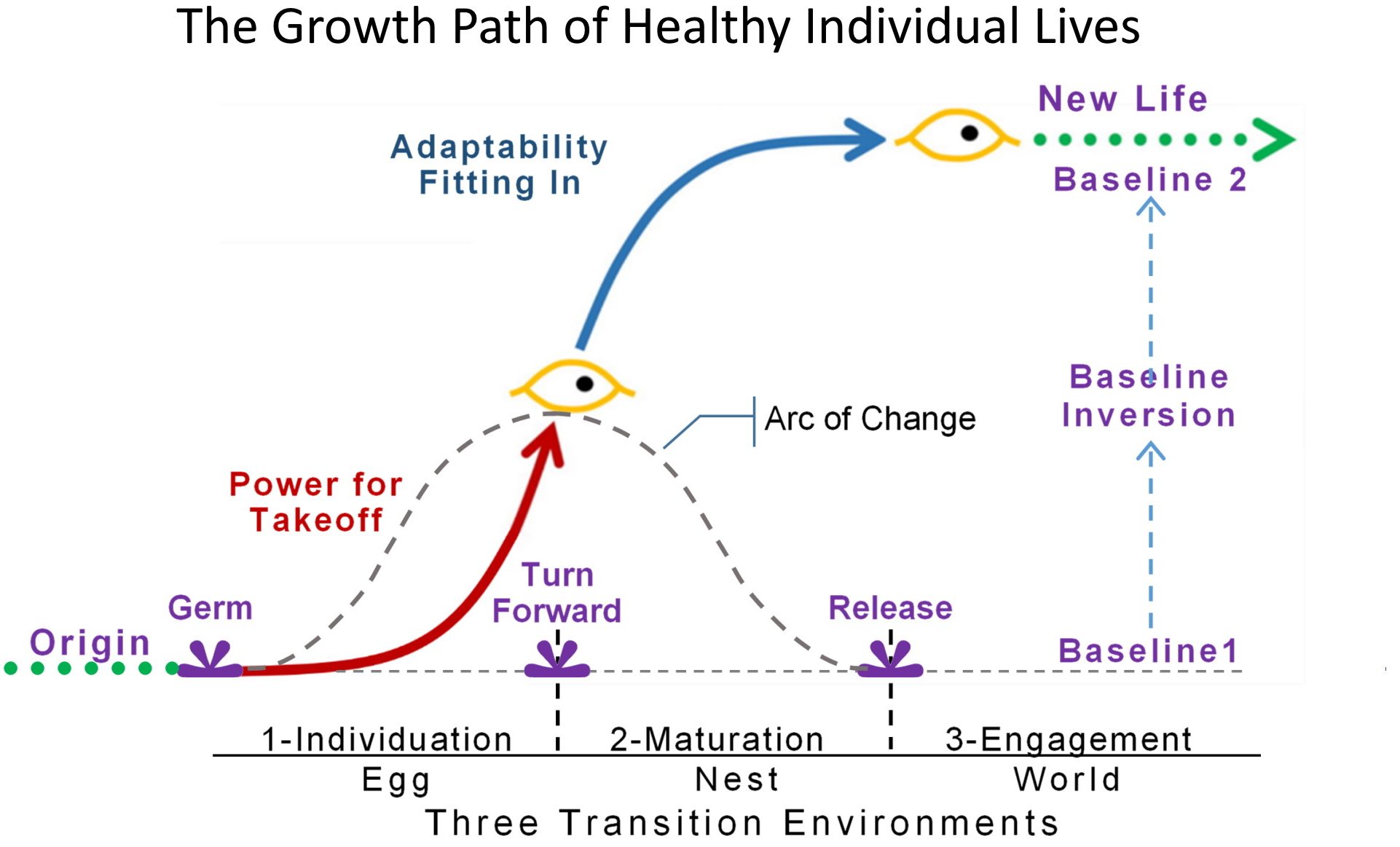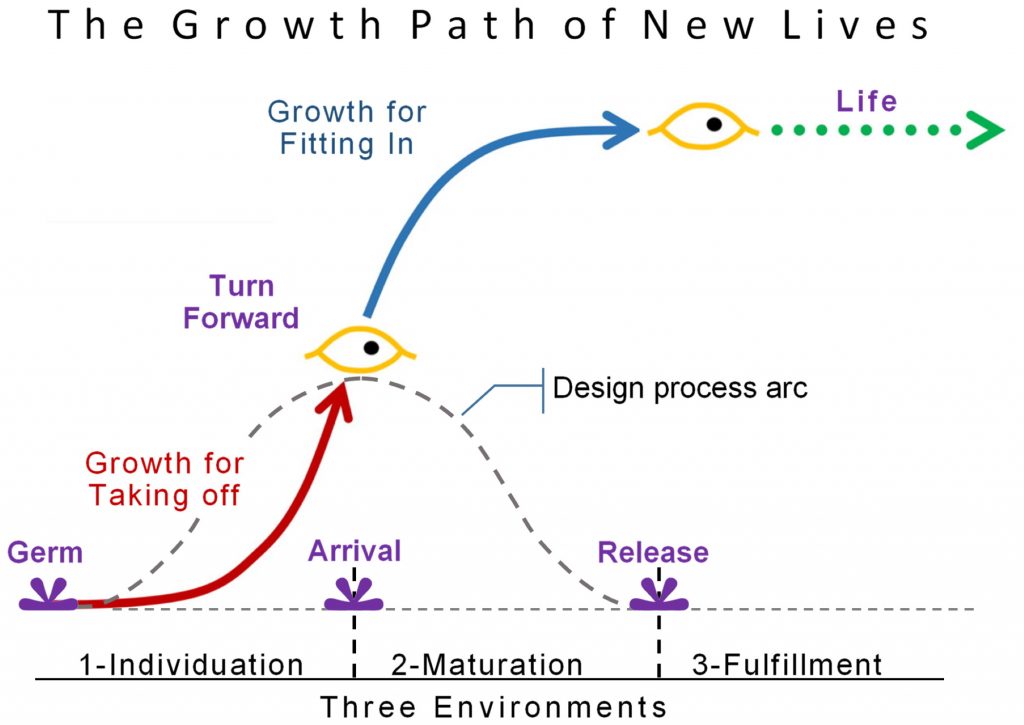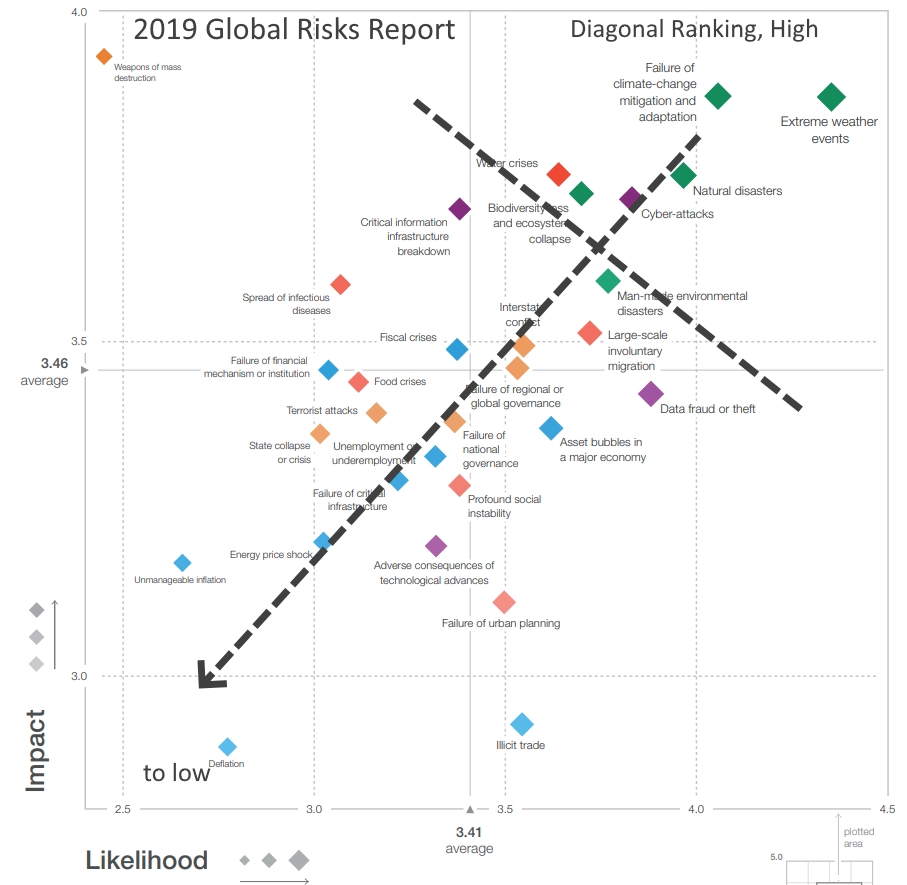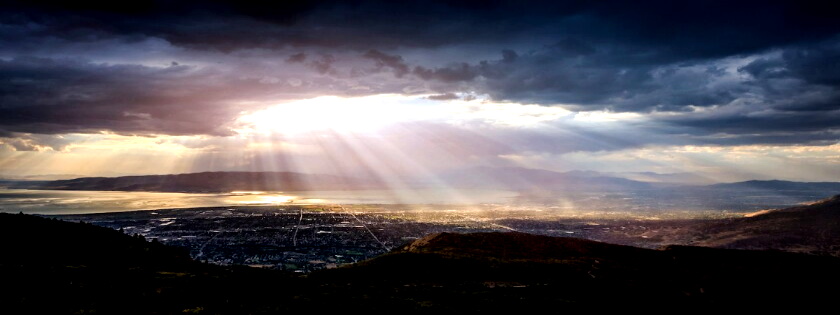
I really like the idea of “Thrutopias: clear, engaging routes through to a world we’d all be proud to bequeath to future generations.” I thought some might benefit from a natural systems view of nature’s primary “thrutopia” (how growth makes it through to life) for the crises that all kinds of growth systems face. Perhaps check my recent research and writing and get in touch if you have questions. I generally don’t charge if I can fit it in.
Nature has one primary strategy for carrying emerging new systems through a whole system growth crisis such as our civilization faces at present. A growth crisis comes naturally for every growth system, as growth starts as a fixed design for multiplying the new system’s power and runs into trouble. Whether it is more or less severe depends on whether there is a good response. The crisis develops as its initial period of free exponential expansion begins to multiply internal and external pressures and conflicts instead. That threatens the system and its environment. Think of a personal relationship as a model. It develops freely and marvelously until some conflict appears, and the response to it determines the fate of the relationship and its environment.
It is quite surprising that this simple and obvious feature of how natural systems develop did not attract the attention of the leading sciences, apparently just believing some other story.
Telling it a story of nature managing the birth of new lives would fit a story arc of nature first promising new lives a gift much too good to be true, but that is true for a while. That confusing signal is part of the trouble. Nature knows all along that the initial gift is one to be taken away and for it to be unexpected for inattentive new lives. Then to select some for the gift of lasting life, nature gives ever new life a warning. Then she rewards those that change their fixed designs for maximum growth to adaptive growth and engagement with the world around them. That then stands as “the door to life,” an act of a new system choosing live, nature having gotten things started and leaving it up to new entities to switch to becoming internally adaptive and externally engaging.
You notice that I shifting back and forth between scientific and familiar discussion. It comes from my starting as a scientist and studying how language developed from people coining words and expressions to convey their experience with natural systems… ! So we have a natural systems language too.
It’s fairly easy to begin to study these transformations from familiar examples. Any of the many things we do or that happen in a day combine those startup and transformation stages. For example, the startup phase of tasks, projects, businesses, or relationships is always some natural or personal “urge to create.” If all goes well, that expansive growth follows for a bit, then at the right time, a turn toward making it a success by the system becoming adaptive to internal and external needs so it can live in its world.
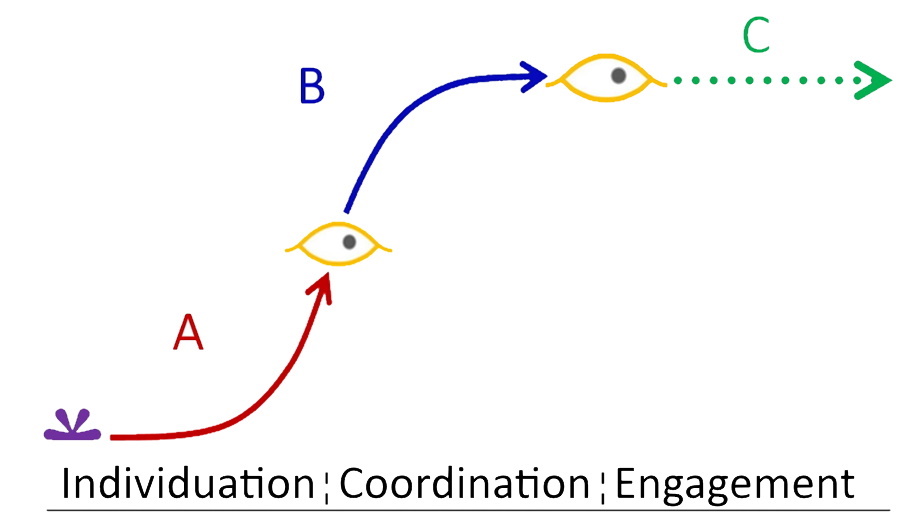
Technically that first follows a design principle of maximizing power (called MPP) and then one for maximizing resilience (called MRP). The growth of the new system then climaxes at its peak of capability, resilience, and endurance. That change comes from the system changing its internal rule for how it invests its resources, going from multiplying its power to making it work by serving needs, including the needs of the system and the parts.
As one studies how these startup and resolution stages proceed in personally familiar cases you will find new ways of describing how it happens. That makes it easier to imagine how we could tell stories about the challenge before our world civilization, and people thrilled with it and lost and confused by it. The pattern to study and anchor other observations is that initial urge to create then accelerating activity followed by an urge to make it work and a climax with perfecting touches.
_______________________________________
Recent research –
2021 Henshaw, J. Understanding Nature’s Purpose in Starting all New Lives with Compound Growth: New Science for Individual System
jlh

